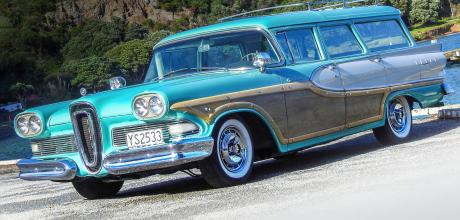1958 Edsel Bermuda
Famously unforgiven for its challenging looks, Ford’s much-ballyhooed Edsel now prompts an indulgent smile wherever it goes.
Words and photography Patrick Harlow
CROWD FAVOURITE
EDSEL BERMUDA STANDING OUT FROM THE CROWD
Beholding beaty
When a friend invited me to go for a drive one Sunday, I had no idea what a treat it would be. Our destination was a group of former small factories, perched on the side of a hill in Miramar with the vista of Wellington and its beautiful harbour visible from every window. It was owned by Jamie McCoy and at one stage it was used for his automotive dismantling business focussing on Fords. Over time business got so good that he was able to diversify into property, until he got to the point where he wound down the dismantling business to focus on property. The space used for wrecking cars and storing parts became an area to carry out the exact opposite. Rather than stripping cars to sell the parts, he now scours the country and the world to buy parts that he can use to restore and maintain his own eclectic collection of British and American cars. Although Jamie admits a fondness for Fords, they by no means dominate his collection.
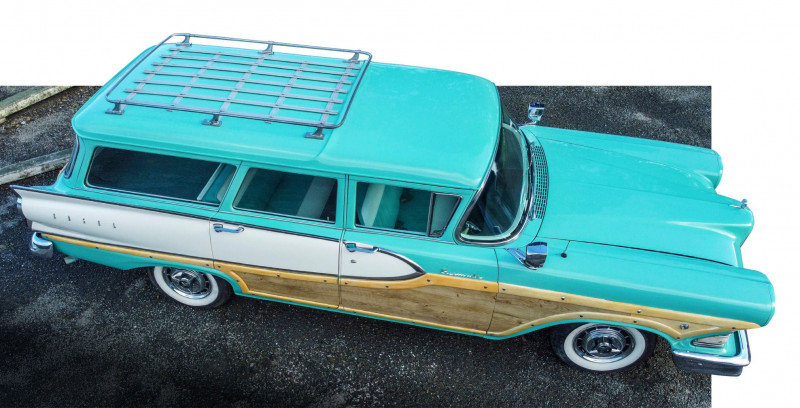
These days woodies are pretty rare cars and I had never seen an Edsel version before. I knew I had to come back later armed with a camera
In the pleasant hour or so I spent wandering around his factories, a lot of cars caught my interest, but one I especially liked was an Edsel Woodie sitting on a hoist. These days woodies are pretty rare cars and I had never seen an Edsel version before. I knew I had to come back later armed with a camera.
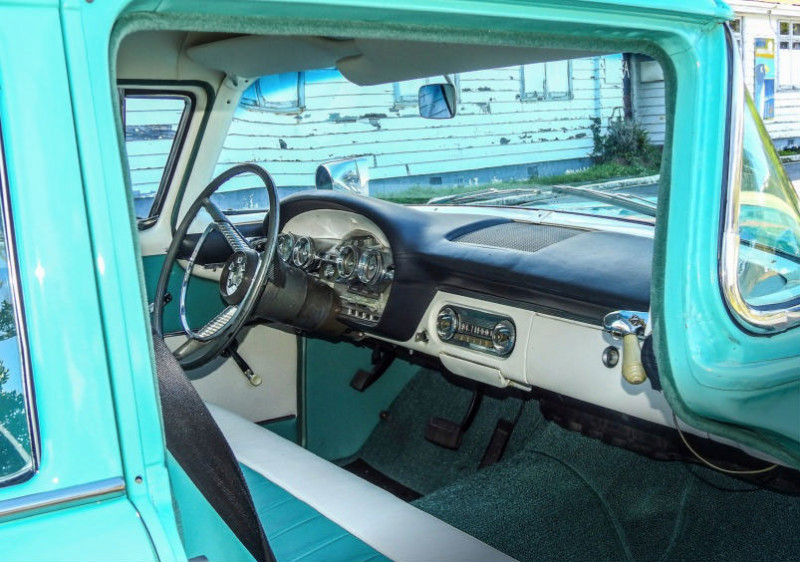
Long after wood went out of fashion as a car body material, it came back as a styling enhancement in the ’30s to make a car look more prestigious. However, they eventually fell out of favour with mainstream buyers due to the cost of keeping the wooden panelling in good condition. Then, thanks to a resurgence caused by Californian surfing culture, they had a brief renaissance period in the ’60s through to the ’70s. Although these renaissance cars looked like the wooden cars of the ’40s and early ’50s, it was non-structural and generally only plastic trim.

FORD FLEXES ITS MUSCLE
Like the woodies, the Edsel plays its own part in American automotive history. It came about when the USA was an economic giant. The American people had a lot of money in their pockets which they were willing to spend on cars and modern appliances. The automobile of the day was as much a piece of art as it was a transportation device and a lot more interesting than the four-wheeled toasters we drive today. The period from the ’50s through to the oil crisis of the early ’70s was the heyday for the American automobile. The launch of a new car was a big event with road shows touring the country. Hence it is no surprise that Ford decided to introduce new car brands to the public. One of these was the Edsel.
To compete with Pontiac, the design parameters were that it had to be distinctive and not resemble other Ford cars, be high tech and have a cool name
During this period Ford had its sights firmly set on beating General Motors. While other manufacturers such as Chrysler and AMC and several other now-defunct auto manufacturers — such as Hudson, Rambler, and Studebaker — fought for market share, this was the era in which the two giants were most aggressively duking it out.
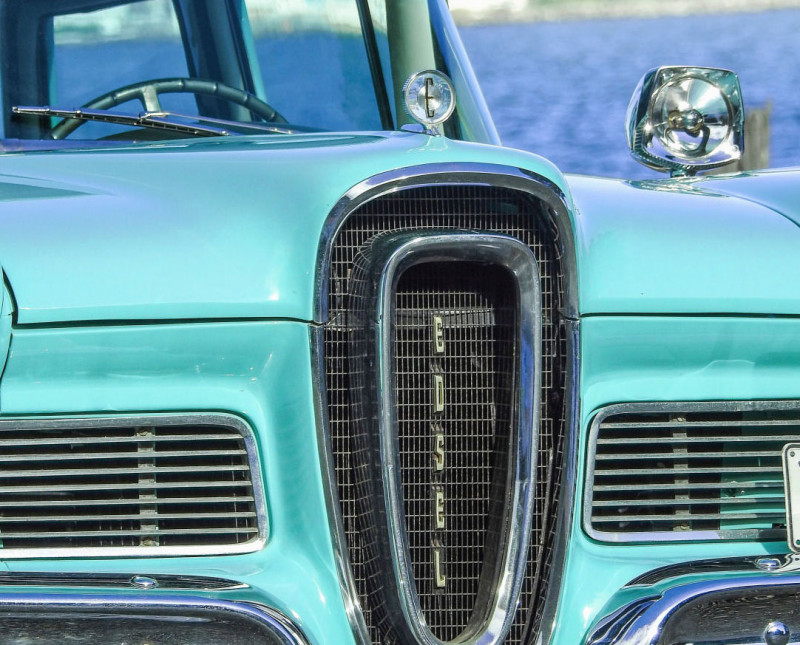
During the ’50s, GM was selling different classes of vehicle under different brand names. Chevrolet was marketed as an entry-level family car, followed by Pontiac with more of an emphasis on sportiness. Further up the ladder was Oldsmobile, which offered more luxury features, then Buick, and finally Cadillac topping out the list as the ultimate luxury family car. Ford had only three car brands. The cars with the Ford badge were designed to compete with the Chevrolet brand at budget entry-level, moving through Mercury, and then to their luxury brand, Lincoln.
In the late ’50s and early ’60s, Ford brought out two new brands to compete with Pontiac and Cadillac. The first of these was Continental, which was intended to outclass Cadillac, and Edsel to compete with Pontiac and offer something for up-and-coming urban professionals. The Continental brand was an expensive failure that lasted from 1956-1957 after which it was returned to the Lincoln marque and ‘Continental’ was a label used to describe the top-of-the- range Lincolns.
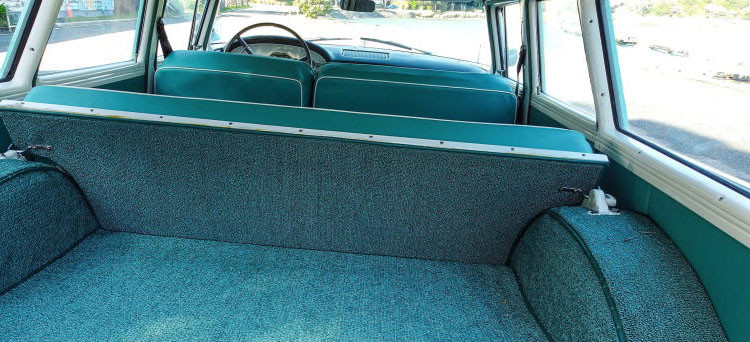
Even while Ford was licking its wounds from that beating, it jumped back in the ring with the Edsel. To compete with Pontiac, the design parameters were that it had to be distinctive and not resemble other Ford cars, be high tech and have a cool name. In the year leading up to its launch, Ford started a massive advertising campaign to announce the new brand while keeping any details about the car secret. ‘E’-day for Edsel was 4 September 1957. The shape and style of the car was top secret. The only facts released were that this was “a revolutionary and entirely new car”. Ford believed the car would sell itself. Once people saw it they would be falling over each other to buy it.
SHOWSTOPPER
Early in October, to keep up the hype, Ford produced a live hour-long TV broadcast called The Edsel Show to showcase the Edsel for those who had not been able to see it. Not only did it showcase the wide range of Edsel’s 18 models — derived from a coupe, a convertible, and a station wagon — but it also included some of the biggest celebrities of the day such as Bing Crosby, Bob Hope, Louis Armstrong, and Frank Sinatra. It’s worth a look on YouTube. However, after being on the market for just a month, Edsel's sales figures were already in decline.
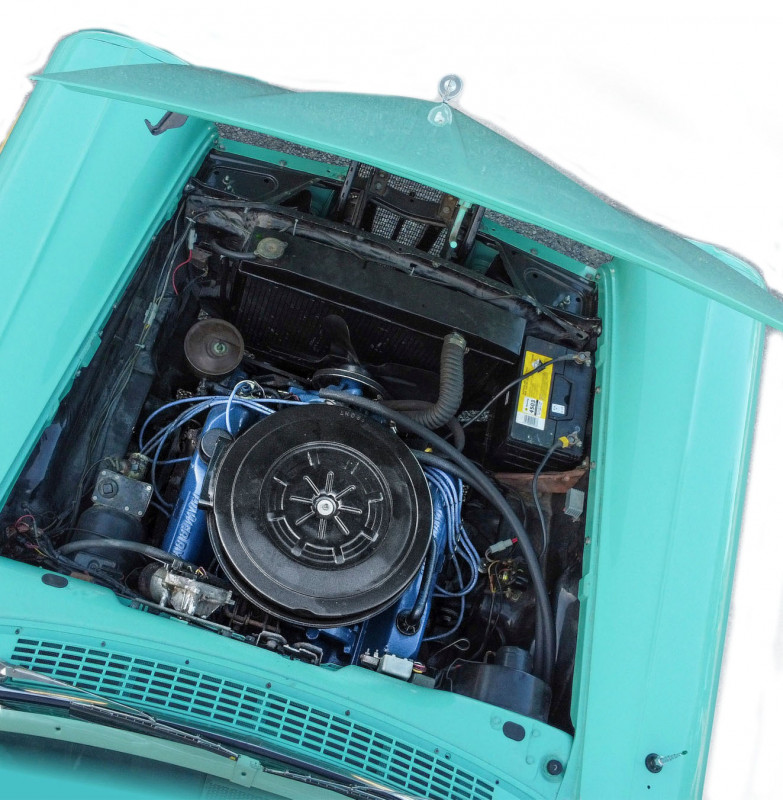
What followed was a lot of public confusion as people tried to make sense of it, especially the vertical grille. Ford’s marketing may have been daydreaming of a styling feature, perhaps mimicking the double kidney found on BMWs, or the slatted grille of Rolls-Royce, Jaguar, and Alfa Romeo. In that regard, much to Ford’s embarrassment, it missed the mark. Some made fun of it.
Others just thought it downright rude. Sure, the car had some hi-tech features such as the ‘Teletouch’ telephone-dial-like gear selector mounted around the centre of the steering wheel, and an electric boot release. One feature I especially liked was the rotating dome of the speedometer which gave it a nautical compass motion but those things don’t add up to anything close to a revolutionary car. And that exterior styling was still confusing. Was it intended to be upmarket or just stand out?
To compete with Pontiac, the design parameters were that it had to be distinctive and not resemble other Ford cars, be high tech and have a cool name
Despite sharing many parts with other Ford cars, Ford also persisted in claiming, to an increasingly unconvinced public, that it was a totally new car. What was incontestable was that as a new brand, the car had no racing history that would compete with Pontiac, or a heritage like Oldsmobile, leaving it to flounder in no man’s land. The Edsel had less going for it than Ford’s most recent Continental brand launch. At least the Continental name had been known as an expensive luxury Lincoln since its inception in the 1940s.
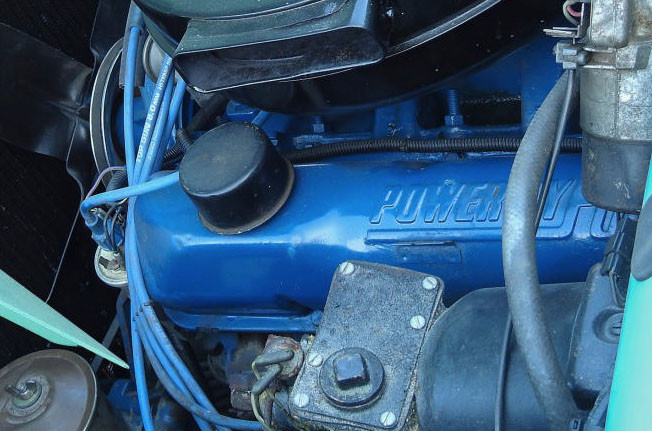
The Edsel range was supposed to be a Ford best-seller which would see around 600 cars a day being sold towards a target of 250,000 cars per year. In its first week, Ford managed to sell 350 cars per day. From there it was downhill. In its first year, just over 65,000 Edsels were sold. Sales dropped to just over 45,000 the following year, and in 1960 sales failed to break 3000. The buying public had passed judgement on the Edsel. Production stopped. The brand was destined to fade away and become just a footnote in Ford’s history, leaving in its wake a debt of US$350 million, or in today’s money, NZ$5bn.
FAME AT LAST
Only it didn’t. For the next few decades whenever ‘lemons’ or grandiose failures were mentioned, the name Edsel asserted its genuine claim to fame. Comedians even joked about them. They were even hard to sell as a secondhand car and many made their way to the wreckers’ yards.
For the modern car collector, infamy is just as good a reason for investment as fame. What was seen as an expensive failure took on a new life shortly after we entered the new millennium. Not only was the Edsel infamous, but it was also almost extinct, making it a surprising conversation piece in a collection. What gives most cars value these days is the legend that goes with them. If Carol Shelby had not taken an AC Ace, swapped out its inline-6 for a V8, and turned it into a legend called ‘Cobra’, most of us would not even know of a car company called AC.
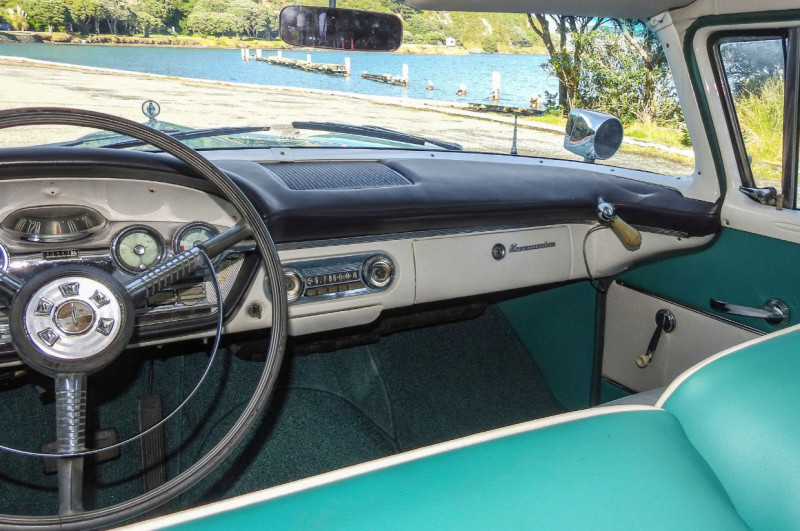
Outside of New Zealand, only a few have heard of the Trekka, but like the Edsel, it is a rapidly appreciating car as collectors scramble to find the few good examples that still exist.
Having a car that is badass infamous yet nice to drive is the icing on the cake. What was ugly in the early ’60s can be cool, if still quite challenging, looking today. Such were my thoughts as I stood looking at Jamie’s 1958 Edsel Bermuda 390. The Bermuda tag meant that the car was the top-of-the-range station wagon for Edsel, hence it has all the extras such as the Teletouch automatic gearbox mentioned earlier.

Jamie acquired the Bermuda from a friend in Waipukurau in 2014. It had been stripped down by the previous owner who intended to restore it. Jamie bought the body with an engine and a huge jigsaw of parts. He has always liked the quirky woody cars and this one was extra quirky.
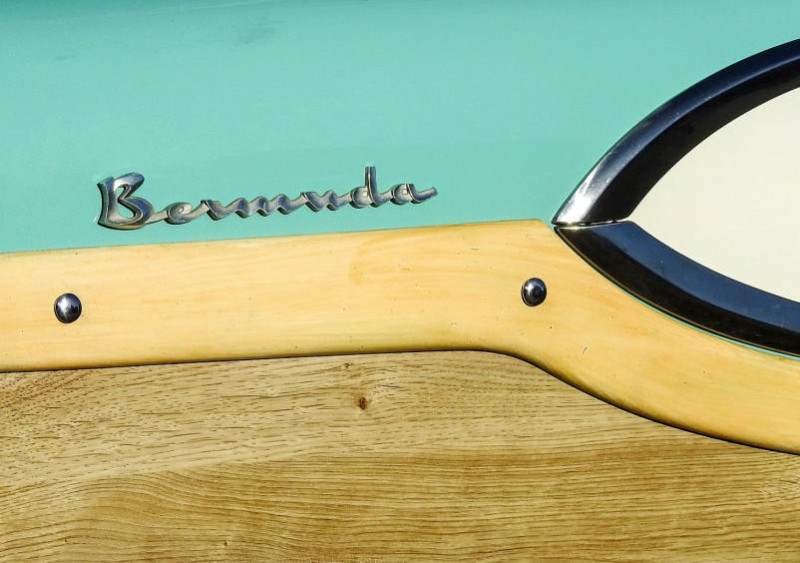
It would also be a good-sized station wagon for taking on tours around the country. It has taken eight years to restore the car to the condition it is in now. One of his biggest wins was that when he took the body off the chassis, he discovered very little rust. The original factory-installed 361cu-in engine arrived just as a collection of parts, so Jamie decided to upgrade it with a 390cu-in (6.4-litre) V8 engine he had sitting on the floor.
The Bermuda is one of four Edsels that Jamie owns, the others being a ’58 Citation saloon car, a ’59 Villager wagon, and a ’59 Corsair convertible. One of the biggest headaches with the restoration of the Edsel Bermuda was the Teletouch automatic selector system. Never famous for its reliability when it was new, it ceased to be an option in 1958 making the car that Jamie has one of the rarest of the rare.
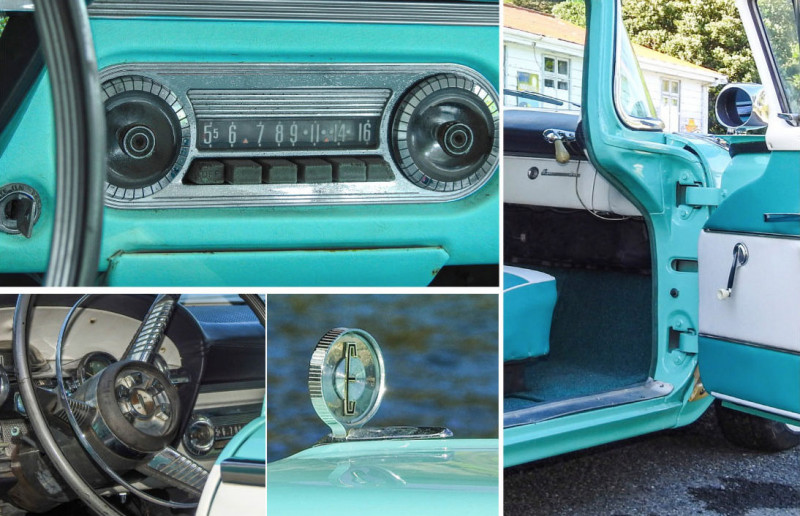
Swapping it for something different was not an option. All he had was a collection in a box that included most of the parts and a bunch of wires. Fortunately, he managed to purchase some new-old-stock relays to connect the Teletouch buttons to the three-speed Cruisematic gearbox. With a bit of help, he was able to rewire the selector buttons on the steering column and get all the electronic parts of the car working.

His second big headache was the distinctive boomerang tail lights, which were broken. Amazingly due to the new popularity of these cars, many parts are now being remanufactured for the booming US classic car market. It was a eureka moment when Jamie found a source for new tail light lenses in the US. Like the Teletouch selector, the correct tail light lenses had to go back on the car. There were several other smaller eureka moments as the restoration continued. Another one was when he managed to track down the missing pieces of exterior plastic wood trim and the bits of chrome that add to its upmarket appearance.
It was a eureka moment when Jamie found a source for new tail light lenses in the US
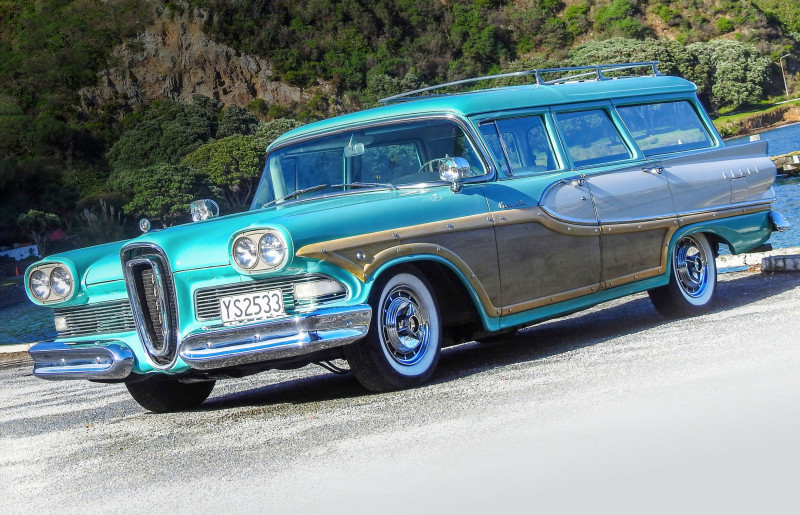
The exterior is now complete and includes the internally controllable fender-mounted spotlights and a roof rack that cried out for a surfboard to complete its woody look. There is still a little bit of work remaining to be done on the interior, but this is so minor that, to the untrained eye, at first glance it appears to be finished. Like most of the cars in Jamie’s collection, the Edsel is warranted and ready for the road and has already provided many enjoyable outings for his family.
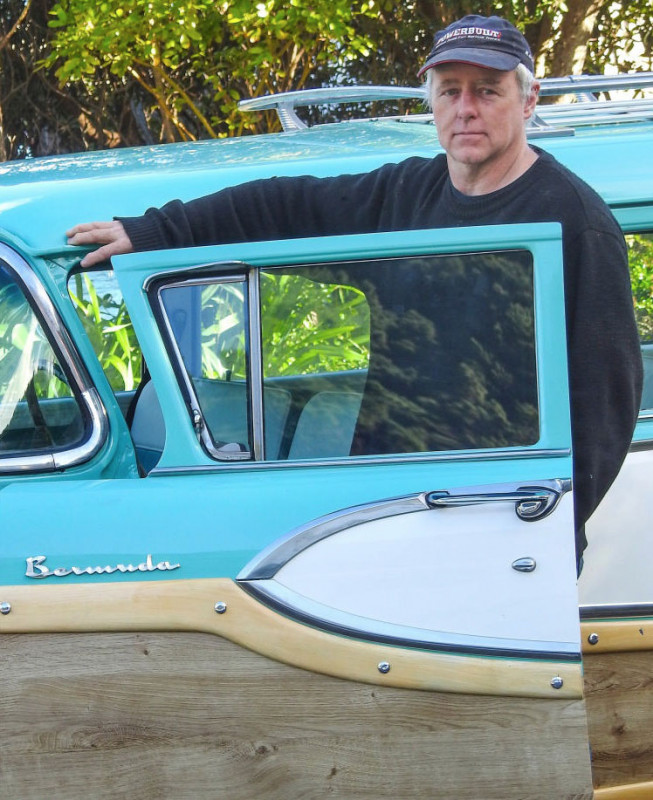
Proud owner, Jamie McCoy
Note the remote handle for operating the externally mounted spotlight.
While these tail lights might look quirky and offbeat, those who desire Edsels admire their mid-century style and innovations
What was seen as an expensive failure took on a new life shortly after we entered the new millennium.
Original Edsel factory radio
TECHNICAL DATA 1958 EDSEL BERMUDA
- Engine: Ford FE-series V8
- Displacement: 361ci (5.9L) standard, 390ci (6.4L) as featured
- Bore/ stroke: 102.8/88.9mm
- Valves: 2 per cylinder
- Compression: 10.5:1
- Fuel: Naturally aspirated, 4-barrel carburetor
- Max Power: 226kW (303hp) @ 4600rpm
- Max Torque: 542Nm (400 ft-lb) @ 2900rpm
- Transmission: 3-speed Ford Cruise-O-Matic
- Brakes: Drum
- Steering: Recirculating ball
Dimensions
- Length: 5217mm
- Width: 1958mm
- Wheelbase: 2946mm
- Height: 1494mm
- Track F/R: 1498/1432mm
- Weight: 1890kg
Performance
- Top speed: 115mph / 185kph
- 0-62mph / 0-100kph: 9.2 seconds
- Standing ¼ mile: 16.5 seconds
If any car shouts out “1958 America!” it’s this 3-tone Edsel wagon
What followed was a lot of confusion as people tried to make sense of it, especially the vertical grille
No shortage of power from the upgraded FE 390ci big-block V8.
If any car shouts out “1958 America!” it’s this 3-tone Edsel wagon
A rare piece of automotive history, one which you would be unlikely to see anywhere else, especially in this condition.
Cavernous interior includes fold-down rear seat for additional space
This Edsel boasts Teletouch pushbutton 3-speed automatic transmission, which was an eccentric Edsel-only option offered in the late ‘50s
Although the styling is controversial, this wagon is certainly striking and resonates with nostalgia
The exterior chrome and simulated woodgrain paneling on this Edsel are in tremendous shape. Note the guard-mounted spotlights


